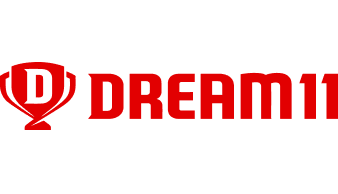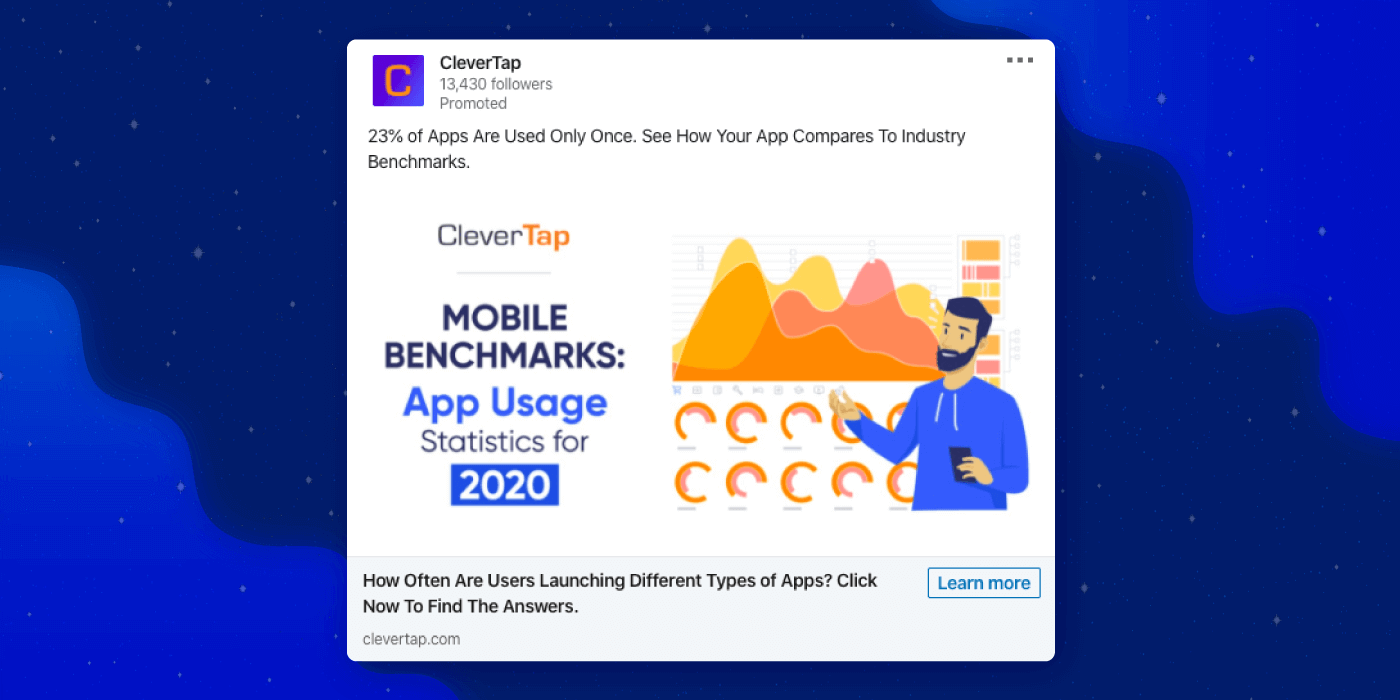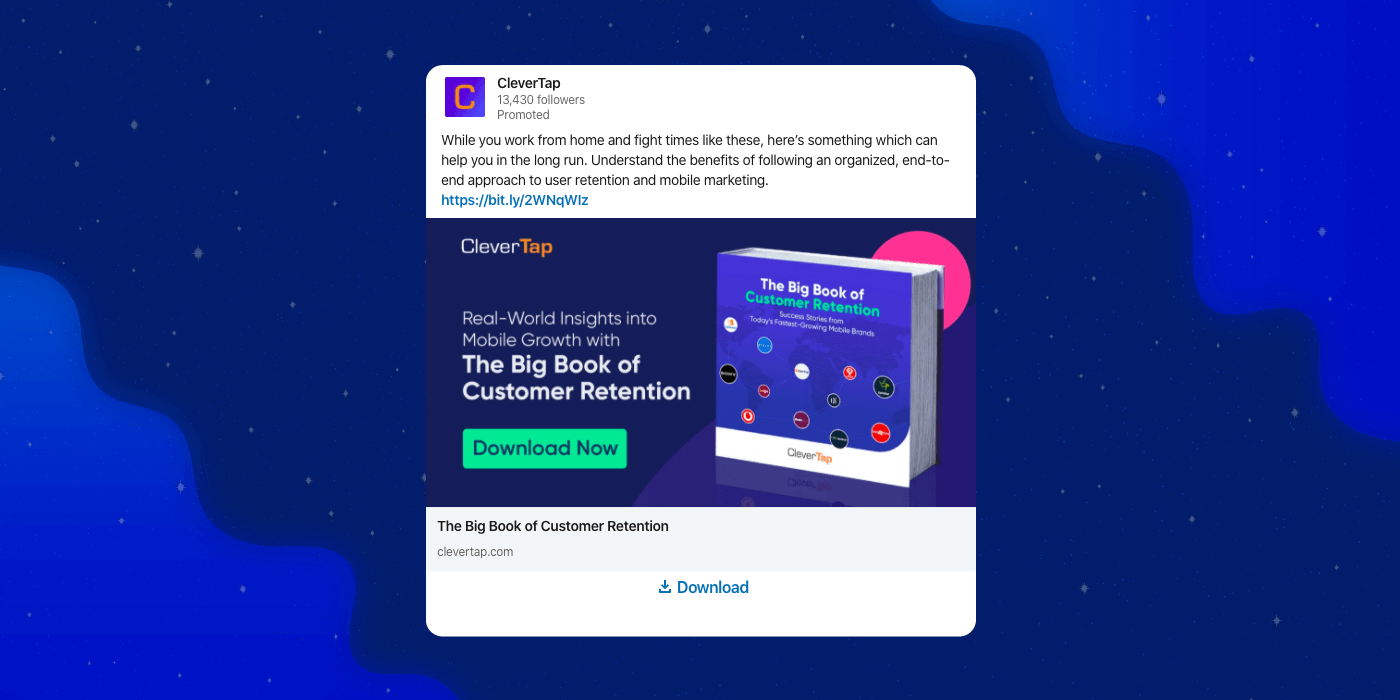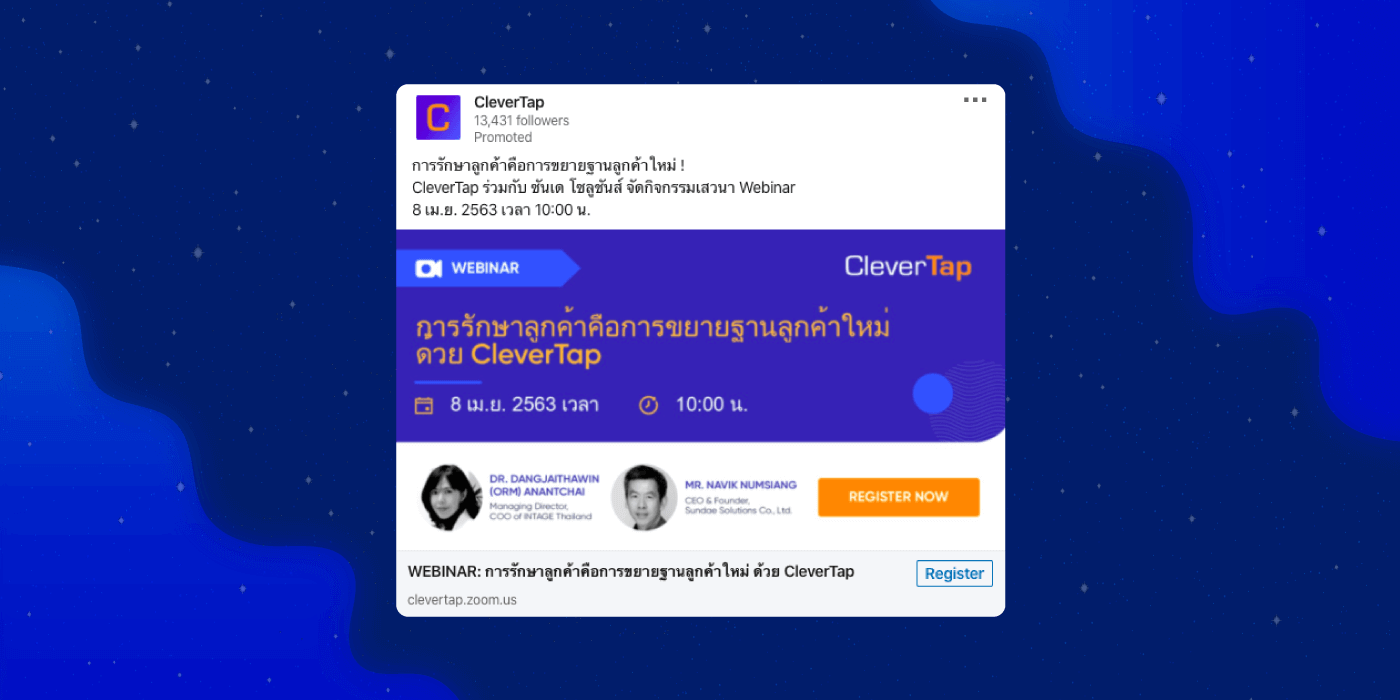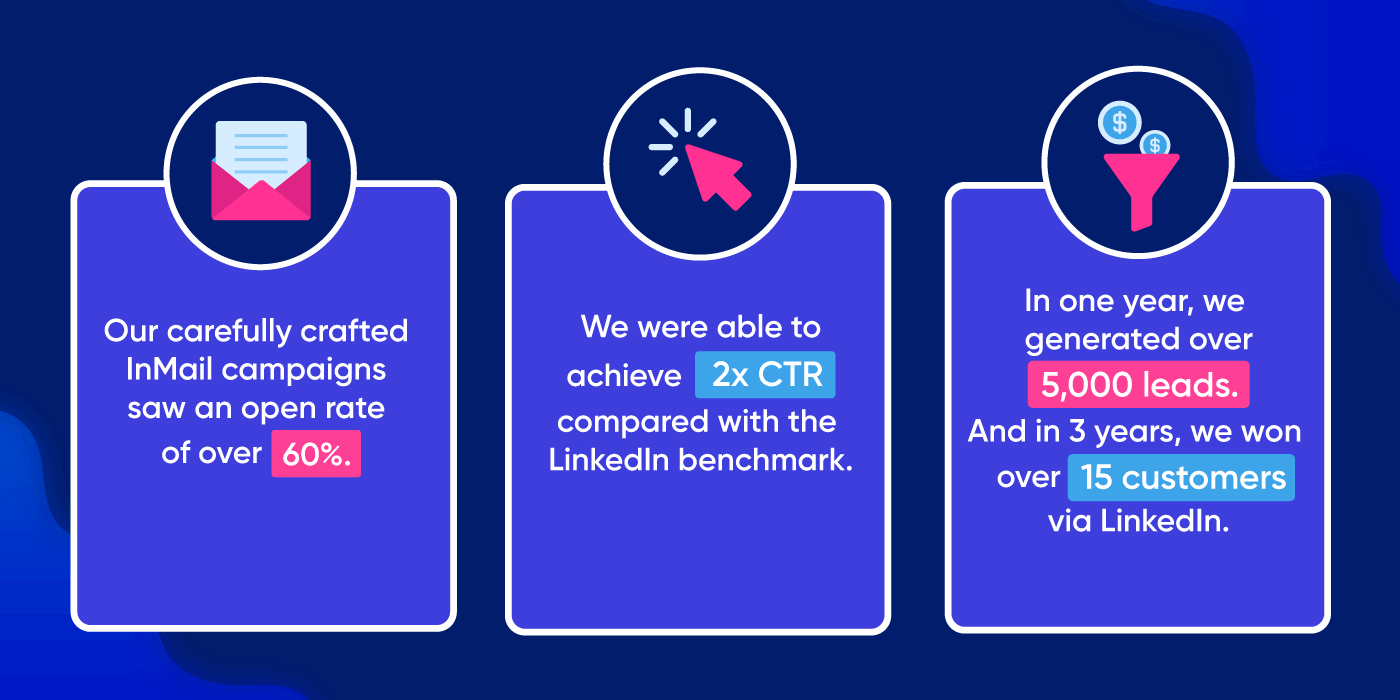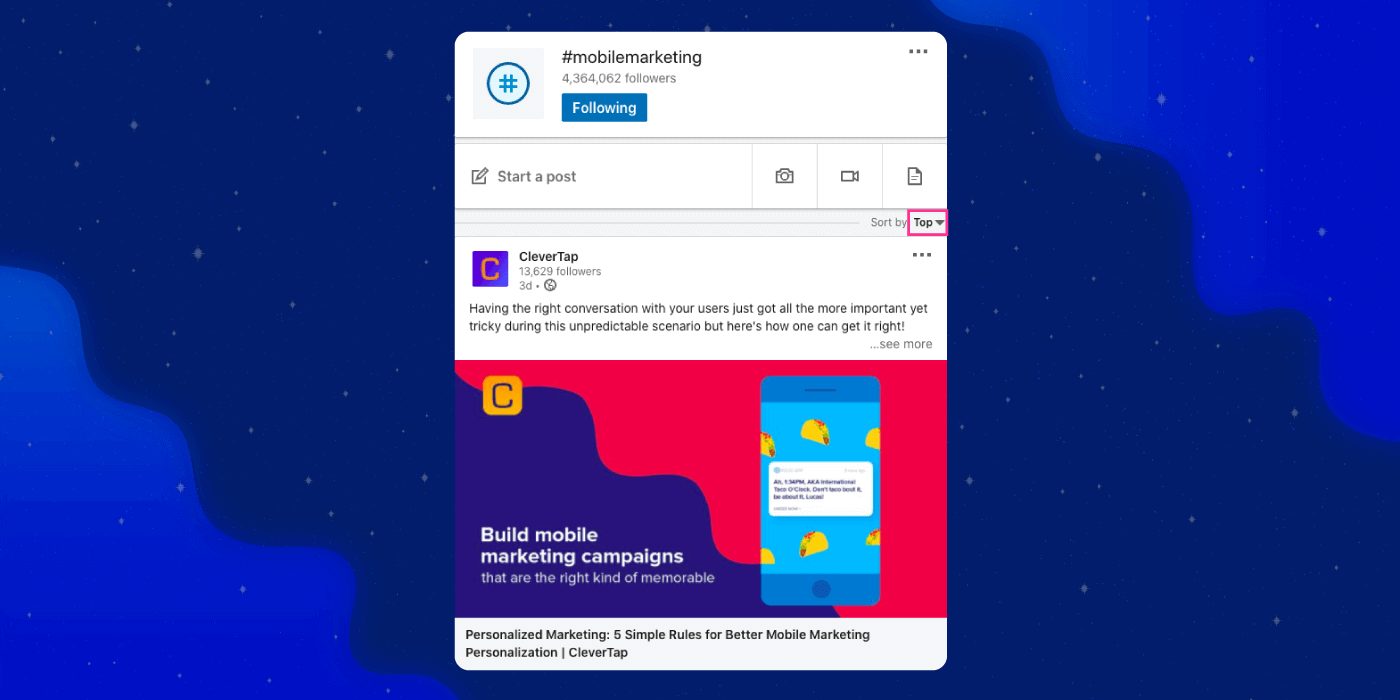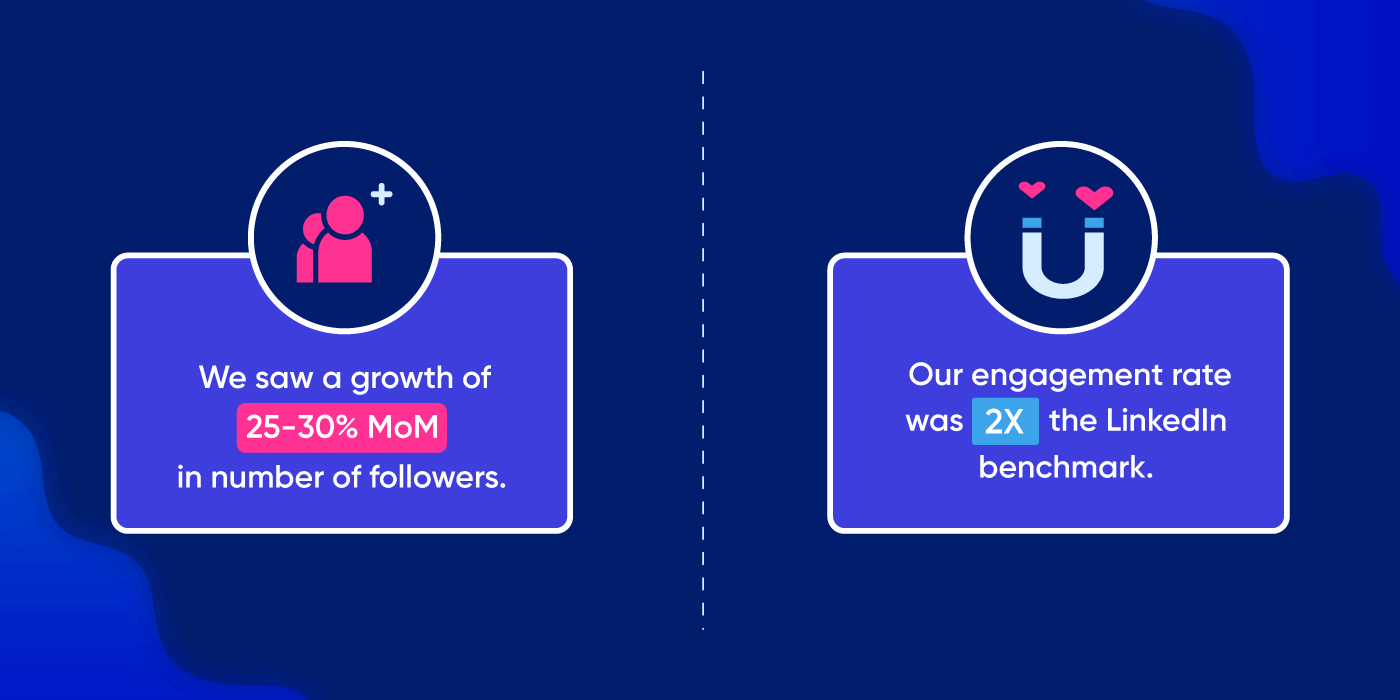Our reason for existing as a company is to help marketers and brands convert, retain, and grow their customer base. Every day, our platform enables thousands of mobile brands to build meaningful relationships with their users. And we do this by providing actionable, real-time insights that help marketers create personalized customer experiences at scale.
But where do we find those marketers? And how do we establish ourselves as a thought leader in a space so congested with gurus and growth hackers?
The answer, as any recruiter knows, is to hit LinkedIn.
The Goals of Our LinkedIn Campaign
What were our objectives in using LinkedIn to reach out to fellow marketers and prospective clients?
First, we wanted to establish ourselves as a thought leader within the mobile marketing space. Second, we wanted to build up a robust pipeline of highly qualified SQLs. Third, with our global expansion, we wanted to increase brand awareness in all-new markets.
Beginning the Journey: What Tactics Did We Use?
Achieving those three goals meant delivering knowledge and value to the right audience. So as a B2B solution provider, we began to use LinkedIn to reach out to app marketers.
We chose LinkedIn because of its access to a relevant pool of professionals from various industries across the globe. But also because of its audience engagement solutions and the fact that it gave our own people ample opportunity to become brand advocates on the platform.
Together with the LinkedIn team, we devised a customized multi-product strategy that included:
- Sponsored Content and LinkedIn Pixels
To engage audiences consistently, we used Sponsored Content. We were able to create brand awareness and achieve incredible growth in terms of audience followership. Eventually, this also helped us acquire better leads from campaigns.
With LinkedIn pixels, we were also able to remarket and continue relevant conversations with our target audience.
CTR = 0.97% for this Sponsored Ad - Account-Based Marketing
Working closely with our sales teams, we marked our prospects on LinkedIn and targeted them with campaigns pertinent to the issues they were facing — retention, engagement, uninstalls, and more — to address context and relevance. This enabled us to focus on building fruitful relationships with our accounts that had the most potential to convert.
CTR = 1.36% for this Lead Generation Ad & 46% Lead Form Completions - Matched Audience
Using this feature, we were able to combine the traits of our ideal customer with LinkedIn’s database and market ourselves to a large pool of decision makers.
Engagement Rate = 2.15% - Sponsored InMails
We converted followers into quality leads and further into opportunities using Sponsored InMails. These InMails allow you to directly share content, send personalised messages, and even rotate message variations.
For our warmer leads, we also added a link to a free demo as our call-to-action on the lead generation forms. This helped bring prospects closer to conversion from the get-go. - Use of Regional Languages
We leveraged the regional insights from our ongoing LinkedIn campaigns and segmented markets by priority to deliver customized content.
Using LinkedIn’s multi-faceted targeting features, we were able to promote content in regional languages to our target audience.
- Sponsored Content and LinkedIn Pixels
Reaching the Summit: Using the Tools Strategically
The strategy we employed was quite scientific — test, learn, optimize, repeat. Over time, we began to uncover new ways to grow our reach using both paid and organic methods.
We began to experiment with content formats, demand generation, and employer branding, and doubled down on what worked for us. This helped us become a knowledge leader within 3 years, all while generating relevant leads.
- Increasing Our Followers Organically
To begin with, we had a strong understanding of marketing funnels on social media. Then we started at the top of the funnel by spreading awareness about our brand and its USP. We ensured content consistency to engage and grow a loyal following.
Result:
- Expanding Our Reach
We segmented our markets as Priority 1, 2, and 3 and delivered customized content across these markets using LinkedIn’s multi-targeting features.
We also championed the use of industry-relevant hashtags to reach a broader audience. Over time, we cemented our position as a prominent contributor to trending industry hashtags such as #mobilemarketing and #userretention
Result:
- Growing Conversions from MQL to SQL
What worked for us was a combination of experimenting with new LinkedIn features and adopting best practices like Matched Audiences, Carousel, and Video-based ads. To create meaningful conversations with our prospects, we opted for ad formats like Sponsored Content, Sponsored InMails, and Dynamic Ads.
We remarketed relevant campaigns to audiences who visited our bottom-of-the-funnel pages such as our pricing page and our demo page. With InMails, we were able to nurture our leads and convert them into opportunities. By adding a field for demo conversions in our lead gen forms, we generated a robust pipeline of SQLs.
Result:
- Increasing Our Followers Organically
What’s Next
Today, we incorporate LinkedIn into our growth plans from the initial stages. We’ve found the platform to be remarkably effective in initiating conversations with marketers. Professionals on the platform are willing to learn about things that can aid their professional growth, which has helped us disseminate our industry knowledge, increase brand awareness, and establish thought leadership while building our funnel.
Since our inception, we’ve strived to help mobile app marketers drive sustainable revenue growth. Being authentic on LinkedIn is an integral part of our mission to be at the forefront of knowledge dissemination. And we see ourselves leveraging the learnings we’ve amassed over the past three years to continue building those relationships with app marketers around the globe.
Read the full CleverTap case study on LinkedIn.
Subharun Mukherjee 
Heads Cross-Functional Marketing.Expert in SaaS Product Marketing, CX & GTM strategies.
Free Customer Engagement Guides
Join our newsletter for actionable tips and proven strategies to grow your business and engage your customers.












